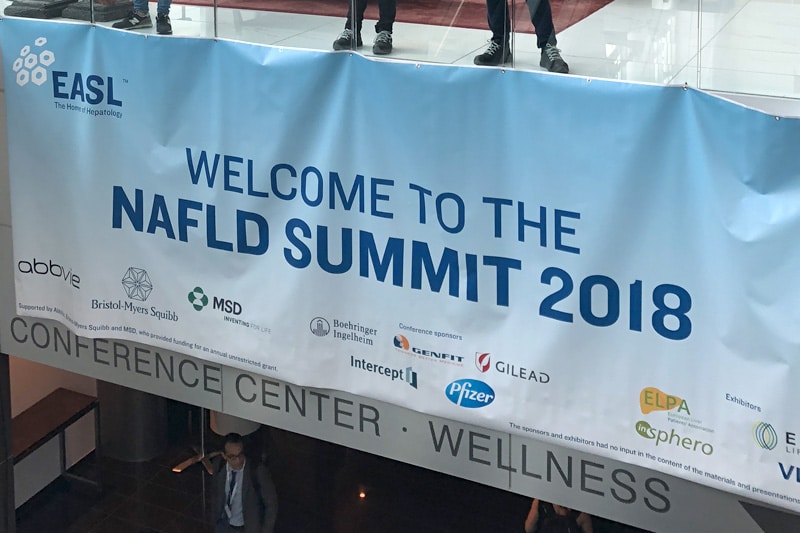EASL nonalcoholic fatty liver disease summit: uniting clinicians, experts, and industry

Geneva, Switzerland, 20 September 2018 – The EASL Nonalcoholic Fatty Liver Disease (NAFLD) Summit commenced today at the Starling Hotel Conference Centre in Geneva, Switzerland, attended by over 300 basic and clinical researchers, industry, and renowned specialists from around the world.
NAFLD is the leading cause of chronic liver disease not only in Western countries but also among developing countries in, East Asia, South Asia, the Middle East, and Latin America. In the US and Europe, nearly 40% of the population have NAFLD and approximately 20% of these individuals are likely to develop progressive liver disease (i.e., NASH) that lead to liver fibrosis and cirrhosis. Another emerging challenge is hepatocellular cancer which increasingly arises in pre-cirrhotic stages.
Although a significant number of new drugs are already in the development pipeline, none are as yet, approved by regulatory agencies. As such, the identification and development of new therapies are urgently needed.
The three day conference is the second NAFLD summit but for the first time it will feature a number of different sessions or ‘case conferences’ where key issues in the management of patients will be discussed. Multidisciplinary representation was integral to the structuring of the Summit programme due to the fact that NAFLD is a disease that affects various organs and systems.
—-
NAFLD track related content and projects:
EASL NAFLD Clinical Practice Guidelines – slide decks
EASL website content on NASH/NAFLD
LITMUS
EASL is the dissemination arm of an EU funded project titled Liver Investigation: Testing Marker Utility in Steatohepatitis (LITMUS), funded by the European Innovative Medicines Initiative 2 Joint Undertaking, also brings together clinicians and scientists from prominent academic centres across Europe with companies from the European Federation of Pharmaceutical Industries and Associations (EFPIA). Their common goals are developing, validating and qualifying better biomarkers for testing NAFLD.

